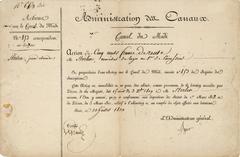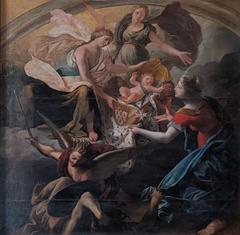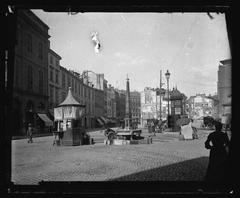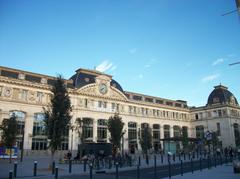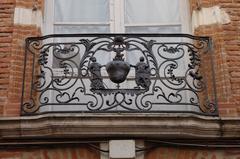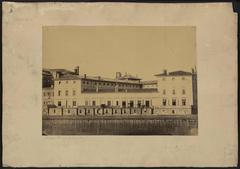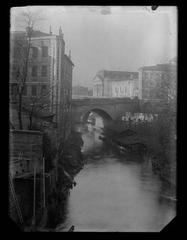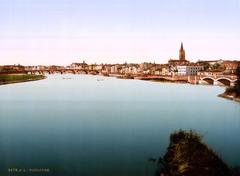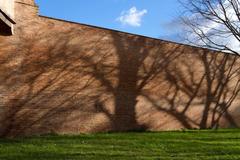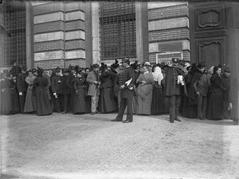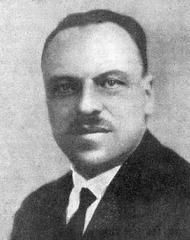Chemin du Vallon Toulouse: Visiting Hours, Tickets, and Travel Guide
Date: 03/07/2025
Introduction
Chemin du Vallon, nestled in the Rangueil district of southern Toulouse, France, is a unique area that encapsulates the city’s historical roots, vibrant academic and medical life, and scenic green spaces. Once a vital rural route and now a dynamic neighborhood, it offers an inviting blend of history, culture, and modern amenities. From remnants of aristocratic bastides to contemporary student residences and healthcare facilities, Chemin du Vallon is both a window into Toulouse’s past and a thriving part of its present. This guide provides detailed information for visitors, including historical context, practical travel advice, nearby attractions, and tips to enrich your experience (Wikipedia; Saint Tronc; Toulouse Tourisme; ArchDaily).
Table of Contents
- Historical Overview
- Visiting Chemin du Vallon: Practical Information
- Nearby Attractions and Activities
- Cultural and Social Significance
- Frequently Asked Questions (FAQ)
- Visuals and Media
- Conclusion and Visitor Summary
- Sources and Further Reading
Historical Overview
Origins and Early Development
Chemin du Vallon (Occitan: camin del Valon) traces its origins to Toulouse’s rural and agricultural past. Historically, it was a vital path connecting Place Saint-Roch to the hamlet of Pouvourville, facilitating agricultural transport and communication. The route followed a small valley descending from Pech-David hill, and its legacy remains visible in the present-day streets and green corridors of the area (Wikipedia).
17th to 19th Century: Bastides and Land Ownership
The valley underwent significant transformation from the late 17th century, notably after Etienne Toulouze’s land acquisition in 1697, which led to the moniker “Vallon de Toulouze.” The area became renowned for grand bastides—country houses owned by wealthy families such as the Pastoret and Stalla-Bourdillon. These estates, often surrounded by agricultural land and marked by features like tree-lined avenues, symbolized aristocratic life. Some bastides were rebuilt in classical style in the 19th century, leaving a tangible legacy in the form of pilasters, stonework, and landscaped alleys (Saint Tronc).
Urbanization and Modern Transformation
The 20th century brought rapid urbanization to Chemin du Vallon. Bastides were demolished or repurposed to make way for public institutions like Collège Vallon de Toulouse, student housing, and medical facilities. Yet, traces of the area’s aristocratic and rural past remain, visible in architectural fragments, green spaces, and the layout of the neighborhood. Urban developments such as the Jardins de Pouvourville Residential Complex reflect a modern approach that values green spaces and community connectivity (ArchDaily).
Visiting Chemin du Vallon: Practical Information
Opening Hours and Access
Chemin du Vallon is a public road and neighborhood open year-round, with no entrance fees or ticket requirements. Visitors can explore at any time, though daytime visits are recommended for safety and to fully appreciate the scenery.
Transportation Options
- Public Transport: Bus lines 37, 78, and 115 serve the area. The Université Paul Sabatier metro station (Line B) and the Téléo urban gondola are within walking distance, providing easy access to and from central Toulouse (Moovit).
- Bicycle: The area is accessible via the VélÔToulouse bike rental system, with dedicated cycling paths connecting to the Canal du Midi and other city attractions.
- Car: Limited parking is available; public transportation or cycling is recommended for convenience.
Accessibility
Chemin du Vallon features paved walkways and gentle slopes, making it accessible for most visitors, including those with reduced mobility. Public facilities and key sites in the neighborhood are equipped with ramps and accessible paths.
Visitor Tips
- Footwear: Wear comfortable shoes for exploring the paths and green spaces.
- Best Seasons: Spring and autumn offer mild weather and vibrant natural colors.
- Photography: The area’s historic remnants, tree-lined avenues, and panoramic views are ideal for photography.
- Local Events: Check community notice boards or the Toulouse Tourisme website for local events or guided walks.
Nearby Attractions and Activities
- Pech David Park: A spacious hilltop park offering panoramic views of Toulouse and the Pyrenees, as well as hiking and cycling trails.
- Université Paul Sabatier: Explore the campus grounds and green spaces; the university often hosts public science and cultural events.
- Canal du Midi: The UNESCO-listed canal is nearby, perfect for scenic walks, cycling, and boat rides (Canal du Midi Information).
- Marché Victor Hugo: Experience local gastronomy and community life at this vibrant indoor market (Taste of Toulouse).
- Bibliothèque Santé Rangueil: A major health sciences library open to students, professionals, and visitors interested in academic resources.
Cultural and Social Significance
Chemin du Vallon is a living example of Toulouse’s evolution from rural landscape to urban center. The area’s bastides and agricultural legacy mingle with the energy of student life and healthcare innovation, creating a unique social tapestry. Modern developments prioritize green spaces, pedestrian-friendly design, and community wellness, while local associations like Association Le Vallon foster neighborhood traditions and organize cultural events.
Frequently Asked Questions (FAQ)
Q: Are there entrance fees or tickets required to visit Chemin du Vallon?
A: No, the area is open to the public at all times with no fees.
Q: What is the best way to get to Chemin du Vallon?
A: Use bus lines 37, 78, or 115, or access via the Université Paul Sabatier metro station. VélÔToulouse bikes offer flexible cycling options.
Q: Is Chemin du Vallon suitable for families and children?
A: Yes, the area is safe and offers green spaces ideal for family walks and outdoor activities.
Q: Are there guided tours?
A: Official guided tours are not regularly scheduled, but local associations and tourism offices occasionally organize cultural events and walks.
Q: Is the area accessible for visitors with mobility challenges?
A: Yes, most paths and public facilities are accessible, with ramps and adapted transport options.
Visuals and Media
Visitors are encouraged to browse images and virtual tours of Chemin du Vallon, highlighting its historical pathways, student residences, and the natural beauty of parks like Pech David. Use hashtags such as #CheminDuVallon and #ToulouseHistory to share your experience and connect with other travelers.
Conclusion and Visitor Summary
Chemin du Vallon offers an enriching experience for visitors seeking to explore Toulouse beyond its traditional monuments. With its open access, blend of history and modernity, and proximity to educational, medical, and green spaces, it is ideal for students, families, and travelers interested in authentic local culture. The neighborhood’s accessibility and community life make it a welcoming destination year-round. For a deeper exploration, consider attending local events or using the Audiala app for self-guided tours and up-to-date visitor information.
Sources and Further Reading on Chemin du Vallon
- Chemin du Vallon, Wikipedia
- Le Vallon de Toulouse, Saint Tronc
- Visiting Chemin du Vallon, Toulouse Tourisme
- Jardins de Pouvourville Residential Complex, ArchDaily
- Résidence étudiante Twenty Campus Toulouse
- Maisons Sport-Santé
- VélÔToulouse
- Canal du Midi Information
- Association Le Vallon
- Université Paul Sabatier Official Site
- Toulouse Tourism Board
- Pech David Park Details (Toulouse City)

